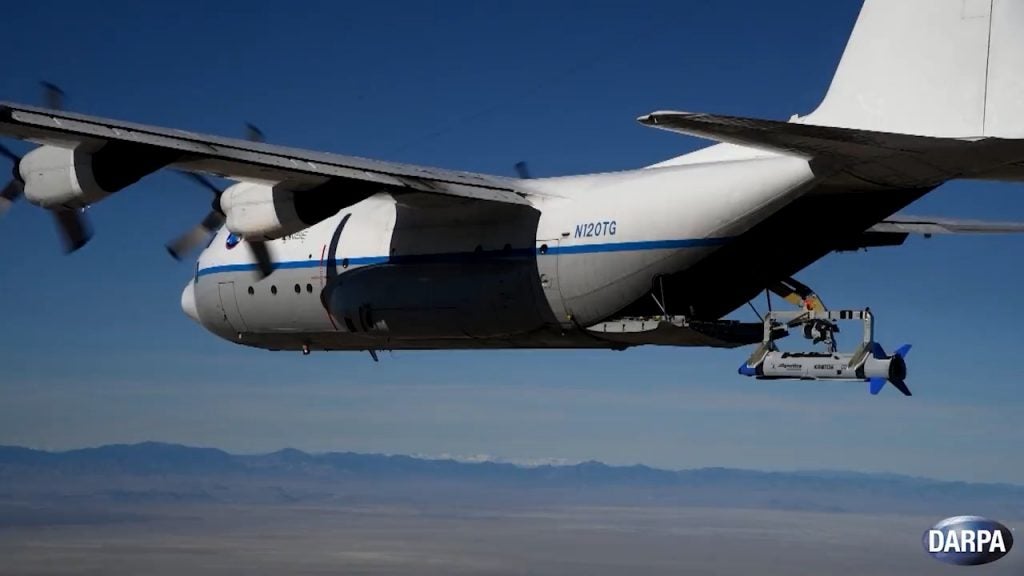DARPA Gremlin UAVs Demonstrate First Airborne Recovery
The Defense Advanced Research Projects Agency has announced that its Gremlins unmanned aerial vehicle program has successfully conducted its first airborne recovery. During the fourth Gremlins flight test deployment in October, two X-61 Gremlin Air Vehicles were able to successfully validate all autonomous formation flying positions and safety features, before one Gremlin went on to conduct a successful airborne recovery to a C-130.
Lt. Col. Paul Calhoun, Gremlins program manager in DARPA’s Tactical Technology Office, said that the successful recovery was the culmination of years of hard work, demonstrating the feasibility of safe, reliable airborne recovery. “Such a capability will likely prove to be critical for future distributed air operations.”
Another achievement during this series of flight tests was the conducting of two flights using the same X-61 within 24 working hours, following refurbishing of the GAV by the Gremlins team. The four test flights also collected many hours of data on air vehicle performance, aerodynamic interactions between the recovery bullet and GAV, and contact dynamics for airborne retrieval. However, one GAV was destroyed during the experiment.
“Airborne recovery is complex,” said Calhoun. “We will take some time to enjoy the success of this deployment, then get back to work further analyzing the data and determining next steps for the Gremlins technology.”
The third test flight series of the Gremlins in November 2020 saw the first docking attempts with the Gremlins Autonomous Docking System, with GAV manufacturer Dynetics saying that the nine docking attempts made across three test flights came “within inches of capture” by the docking system. However, the GAVs were ultimately unable to dock for an airborne recovery.
The ultimate aim of the Gremlins program is to demonstrate air launch and air recovery of four GAVs within 30 minutes. DARPA states that the successful demonstration of safe, effective, and reliable air recovery of unmanned aerial vehicles like the GAVs stands to dramatically expand the range and potential uses of unmanned air vehicles that can be deployed and recovered in flight, keeping manned platforms well outside of the range of hostile defense systems.

